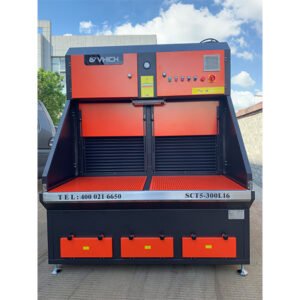
In today’s world, where air pollution poses a significant threat to health and well-being, the quest for clean air has never been more critical. Among the arsenal of tools available for air purification, HEPA filters stand out as a beacon of hope. In this comprehensive guide, we’ll delve into the world of HEPA filters, exploring their various types, media classifications, and unparalleled characteristics.
Classification of HEPA High Efficiency Filters:
HEPA filters come in a variety of forms, each tailored to specific applications and environments.
- High Efficiency Pleated Filters: These filters feature a pleated design, maximizing surface area for enhanced filtration efficiency.
- Non-Pleated High-Efficiency Filters: Offering similar performance without the pleating, these filters are ideal for applications with space constraints.
- High Airflow Filters: Engineered to accommodate high-volume airflow, these filters ensure optimal ventilation while maintaining high efficiency.
- Integrated Supply Air Outlets: Combining filtration and air distribution functionalities, these filters provide comprehensive air purification solutions.
- High-Temperature Resistant High-Efficiency Filters: Designed to withstand extreme temperatures, these filters are indispensable in environments with elevated heat levels.
Media Classification of HEPA High Efficiency Filters:
The effectiveness of HEPA filters largely depends on the materials used in their construction.
- Polypropylene Filter Paper: Known for its durability and chemical resistance, polypropylene filter paper is a popular choice for HEPA filters.
- PolyesterFilter Paper: Offering excellent filtration efficiency and moisture resistance, polyester filter paper is suitable for a wide range of applications.
- Glass Fiber Filter Paper: Renowned for its exceptional capture efficiency, glass fiber filter paper excels in capturing ultrafine particles with precision.
Characteristics of HEPA High Efficiency Filters:
HEPA filters boast an array of features that make them indispensable in air purification systems:
- Efficiency in Particle Capture: With the ability to capture particles as small as 0.3 microns, HEPA filters excel in trapping pollutants such as smoke, dust, and bacteria.
- Stable Chemical Properties: Resistant to corrosion and chemical degradation, HEPA filters maintain their integrity even in harsh environments.
- High Ventilation Capacity: Designed to facilitate efficient airflow, HEPA filters ensure optimal ventilation without compromising filtration performance.
- High Dust Holding Capacity: With a large dust holding capacity, HEPA filters require less frequent replacement, reducing maintenance costs.
- Customizability: Available in various specifications and appearances, HEPA filters can be tailored to suit the unique requirements of different equipment and applications.
Conclusion:
As we conclude our journey into the realm of HEPA filters, one thing becomes abundantly clear: these remarkable devices are not just filters; they are guardians of health and well-being. By incorporating HEPA filters into ventilation systems, we can create environments that are not only clean and healthy but also conducive to productivity and prosperity. Let us embrace the power of HEPA filters and pave the way for a brighter, cleaner future.




